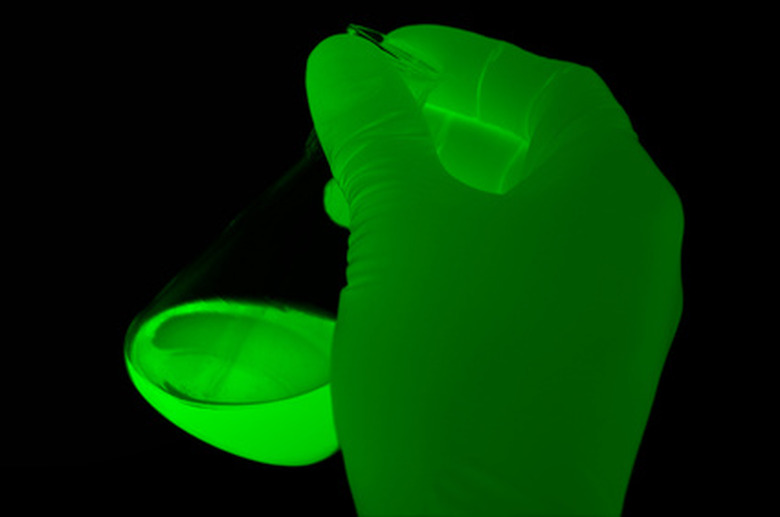Sulfuric Acid & Chlorine Bleach Reaction
Chlorine bleach is a solution of sodium hypochlorite and water. Chlorine gas is produced when sulfuric acid is mixed with chlorine bleach. This reaction is a function of the change in pH of the solution from alkaline to acidic combined with the strong oxidant properties of hypochlorous acid.
Acids and Bases
Acids and Bases
An acid is a chemical compound that donates a hydrogen ion (H+) to another compound. The compound that receives the hydrogen ion is called a base. The normal pH measurement for pure water is 7.0. When an acidic compound is dissolved in water, the resulting solution has a pH less than 7.0. When a base, or alkaline compound is dissolved in water, the pH of the solution is higher than 7.0.
Oxidizing Agents
Oxidizing Agents
An oxidizing agent is a chemical with a strong affinity for electrons. In an oxidation-reduction reaction (or redox chemical reaction) the oxidizing agent receives electrons while the reducing agent loses electrons.
Chlorine Bleach
Chlorine Bleach
Sodium hypochlorite (NaClO) is a stabilized form of chlorine. Chlorine bleach used in the home is generally 3% to 6% sodium hypochlorite mixed with water. Adding sodium hypochlorite to water, creates hypochlorous acid (HOCl) and sodium hydroxide (NaOH). The formula for this reaction can be expressed as follows: NaOCl + H2O ? HOCl + NaOH-. Sodium hydroxide is a base, making household bleach alkaline, with a pH of about 12.5.
Sulfuric Acid
Sulfuric Acid
Sulfuric acid (H2SO4) is a colorless, odorless and viscous liquid. Sulfuric acid is an extremely corrosive oxidizer. When diluted in a water solution, sulfuric acid dissociates into a hydrogen (H+) cation and sulfate (SO4-2) anion. Sulfuric acid in water creates a highly acidic solution with a pH that varies according to the proportion of sulfuric acid to water.
Bleach and Sulfuric Acid
Bleach and Sulfuric Acid
When an acid is mixed with sodium hypochlorite, the acid will donate a hydrogen molecule to the compound, replacing the sodium molecule (Na) to produce hypochlorous acid (HClO). Mixing sulfuric acid with a solution of sodium hypochlorite will result in a solution of sodium sulfate (Na2SO4) and hypochlorous acid.
Using the subscript (aq) to represent the compounds in solution, the formula may be expressed as follows: 2NaOCl(aq) + H2SO4(aq) => Na2SO4(aq) + 2HClO(aq).
Bleach and Chlorine Gas
Bleach and Chlorine Gas
The reaction of sulfuric acid and sodium hypochlorite doesn't stop with the production of sodium sulfate and hypochlorous acid. In water solutions, hypocholorite (HClO) and chlorine (Cl2) reach an equilibrium that is dependent on the pH of the solution. In an acidic solution, the equilibrium favors chlorine in the following fashion: Hypochlorous acid partially breaks down into the hypochlorite anion (OCl?) and hydrogen cation (H+). Hypochlorous acid is a strong oxidant, so the remaining hypochlorous acid in the solution oxidizes the hypochlorite anion producing the irritating and toxic chlorine gas (Cl2).
References
Cite This Article
MLA
Jacobson, Emily. "Sulfuric Acid & Chlorine Bleach Reaction" sciencing.com, https://www.sciencing.com/sulfuric-acid-chlorine-bleach-reaction-6521382/. 13 March 2018.
APA
Jacobson, Emily. (2018, March 13). Sulfuric Acid & Chlorine Bleach Reaction. sciencing.com. Retrieved from https://www.sciencing.com/sulfuric-acid-chlorine-bleach-reaction-6521382/
Chicago
Jacobson, Emily. Sulfuric Acid & Chlorine Bleach Reaction last modified March 24, 2022. https://www.sciencing.com/sulfuric-acid-chlorine-bleach-reaction-6521382/
